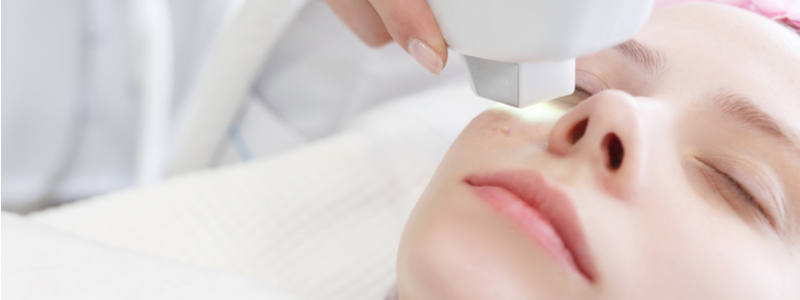Laser skin resurfacing or chemical peel, which should you choose? Find out all you need to know to make the best decision for your skin.

Advances in medical device technology have created numerous solutions to a myriad of skin conditions. Now, there are many options and it can be difficult to choose the right one for your skin’s issues and requirements.
Laser skin resurfacing and chemical peels are two solutions to improving the skin’s appearance and mitigating the signs of aging. How do you know which one to choose? The answer will depend on what you want to correct, your preferred level of intensity, and how much time and money you are willing to spend on the treatment.
Here’s a breakdown of what each process entails that can help you choose the right solution for your skin’s issues.
Overview of The Treatments
Laser skin resurfacing involves a laser that directs short, concentrated, pulsed light at the targeted area of the skin. A chemical peel uses chemicals or fruit acids with differing levels of intensity to strip the top layers of the skin. Both are outpatient procedures, which means there is no overnight hospitals stay. They are generally done in a dermatologist office or spa.
Issues That Can Be Treated
Laser skin resurfacing tackles skin issues ranging from rosacea, sun damage, and wrinkles, to brown spots, acne scars, and other types of scarring of the skin. Laser treatments can also tighten, smooth, and improve the skin’s texture.
Many skin conditions can be treated with chemical peels, such as acne scars, age spots, sun damage, and pigmentation issues. Chemical peels can lessen fine lines and improve the texture of the skin, but won’t have as much of an effect on sagging skin or deep wrinkles.
What Is Your Level of Intensity?
Both of these treatments are available in different levels of intensity, some of which can be administered during a lunch break.
For example, there are two types of laser resurfacing solutions. Ablative lasers that strip away the top layers of skin, taking problem spots and wrinkles with them. Non-ablative lasers are less intense. They stimulate your skin to produce more collagen, which helps improve texture and reduce sagging.
Light peels that use alpha hydroxy acid can be done on a lunch break. Deep treatment options use a more highly concentrated trichloroacetic acid to reduce fine lines, rough skin texture, and discoloration.
Although there are laser devices and peels, they don’t have the same intensity or level of results you get in the doctor’s office. And they can result in a greater incidence of side-effects such as redness, scarring, or hyperpigmentation if not used as directed.
What Are the Side Effects of Each Treatment?
All treatments have some side effects. Factors that influence the level of side effects include medications you are taking, medical conditions, prior skin treatments, and smoking. Your dermatologist will discuss any possible issues and give you pre- and post-procedure guidelines to minimize the risk of side effects and complications.
How your skin reacts to laser skin resurfacing depends on the type of treatment. You may have scabbing and redness for several weeks after treatment as the skin heals.
If you have skin sensitivities, chemical peels can be problematic. You may experience a change in skin tone, which may be permanent or temporary. You can reduce the risk of peels by making sure to choose the right treatment for your skin type.
Cost, Results, and Maintenance
Although you will notice some improvement shortly after treatment, you may not notice the full effect of laser skin resurfacing for months or longer, depending on the depth of the treatment. The results can last several years. Touch treatments may be required, your dermatologist can advise you on how often you will need less invasive treatments.
How often you get a chemical peel will depend on your skin and is something you should discuss with your dermatologist. In general, most patients will get a mild peel every month or six weeks. Occasional deep peels may be used when a problem comes up.
In general, laser skin resurfacing treatments are a more expensive treatment than chemical peels. However, the benefits laser treatments last longer than those from chemical peels. Neither procedure can permanently stop aging. Taking good care of your skin will help the results last longer.